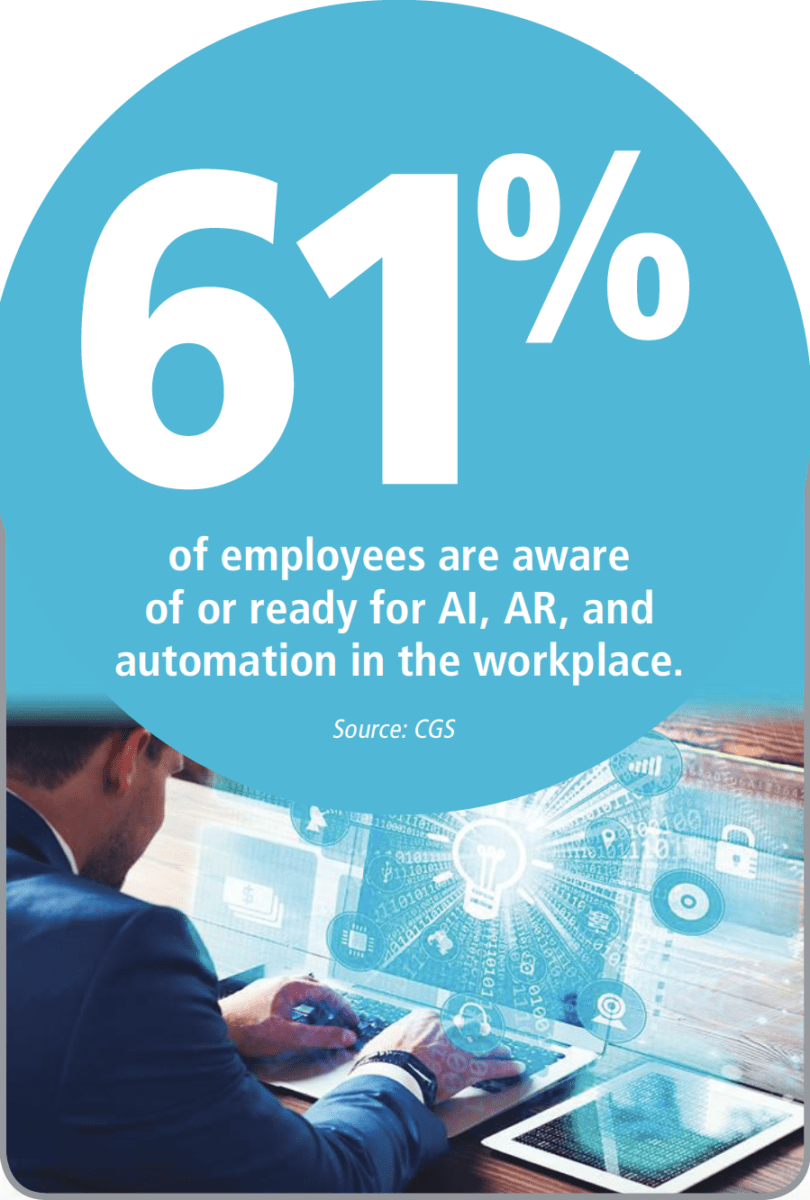The demands of work are putting pressure on HR teams to rethink training programs.
By Doug Stephen
“Choose a job you love, and you will never have to work a day in your life.” This famous and often quoted statement from Confucius had the right sentiment, but some would argue that he forgot the finer points on just how to obtain and retain that dream job.
Today’s workforce is undergoing a tremendous amount of disruption. Technology is driving new skill requirements and even jobs, requiring both employees and their employers to take an active role in preparing for immediate and future needs. Employees might be able to land the job they love, but will they be able to keep it? And how will HR be able to retain a workforce without a robust education and upskilling offering?
New research from CGS examined a variety of employee preferences on training and development, including views on the value of college, the confidence in current skill sets, and expectations for employer-led education. Here are three key findings and what they mean for HR.
1. Transparency and education will be essential in helping employees embrace artificial intelligence (AI), augmented reality (AR), and automation. Television shows like “Black Mirror” might have some companies concerned about how their employees will react to next-gen technology in the workplace. But the Netflix binge-watching sensation hasn’t skewed most individuals’ understanding and awareness of the more practical -and realistic -implications of the technology.
According to the survey, 61 percent of respondents said they are aware of or ready for AI, AR, and automation in the workplace. And many are already reaping the benefits: Technologies like robotic process automation (RPA) are helping employees offload back office, time-consuming tasks, such as completing administrative forms and basic reporting and measurement, to focus on more strategic priorities.
The bigger issue that HR or learning and development (L&D) teams need to tackle is communication around how these new technologies are benefiting employees -not hurting them. L&D and HR teams should work together to develop an effective communication strategy that focuses on the benefits of AI, AR, and automation, and establish how they will train employees to use these tools. Inviting employees to be part of brainstorming sessions and early discussions on new technology rollouts can also create more trainers and ambassadors for the company.

With this in mind, HR and L&D teams should provide reskilling opportunities to allay some of these fears. Training can be a huge differentiator for recruiters, especially for millennial and Generation Z employees who are in the earlier stages of their careers. They want employers to invest in them and provide them with continuous development and feedback.
That’s why companies such as Google consistently earn spots on “best places to work” lists. With real-world training programs like Google University, where employees can take courses on the latest programming languages they need for additional IT certification, the company is demonstrating that it prioritizes employee development.
And when that training can be consumed in small, digestible components, the impact on daily work performance will not be hindered. Incorporating tools such as AR to provide knowledge at the point of need -like how to mix chemical components safely -can drastically improve employee satisfaction and knowledge retention.
3. Confident employees seek upskilling and vulnerable ones wait for their employers. According to the survey findings, confidence is a key driver for individual career development. The 38 percent of workers who are the most confident in their level of job skills have one major thing in common -they are also the ones that are most likely to take the initiative to seek out training for new skills. But regardless of confidence, it shouldn’t fall on the employee to seek out unique training opportunities. Companies must prioritize training programs that institute a learning-to-learn culture and address the skill gaps across their workforce. But there must be buy-in from both parties.
For some organizations, this doesn’t simply mean adjusting the content of their training programs -it means adjusting the format. Modern tools and devices, including tablets and smartphones, can provide workers with on-demand training that’s critical for employees who work remotely or have flexible schedules. Enhanced training formats, including AR, have also revolutionized how skills are being taught where and when they’re needed. If HR and L&D teams take the time to assess their workforce and understand what learning formats work for them, the programs will be much more successful in the long run.
Regardless of workforce needs, one thing is evident: The age of AI, AR, and automation is not futuristic -it has arrived. Organizations need to effectively communicate these changes and offer L&D programs to address them and provide the skills their employees need to succeed in the future.
Doug Stephen is president of the learning division of CGS.














